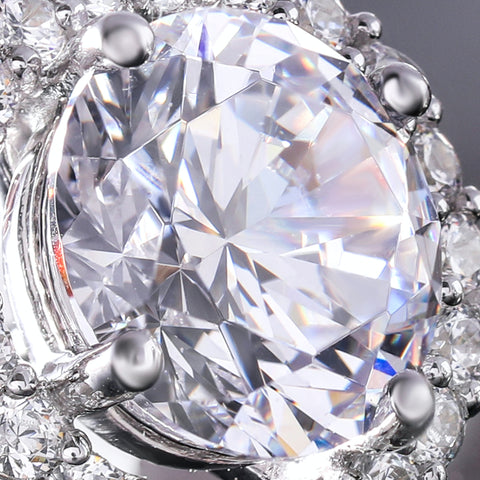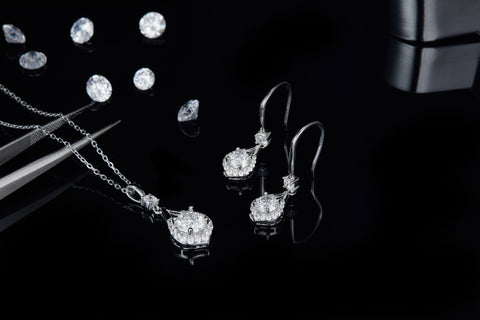- Total $0.00
MORE DETAIL ABOUT LAB GROWN MOISSANITE COMPARE TO DIAMOND
Since the rise of lab grown moissanite, I’ve been asked more and more frequently whether there are any differences between moissanite vs diamond. Yes! There are a bunch! To start, they’re not the same gemstone. But perhaps more importantly, they don’t look the same. So, before you choose between moissanite vs diamond, let’s make sure you are getting what you really want.

Moissanite Ring
Is Moissanite like Diamond?
Nope, hey are completely different minerals, with very different looks and different hardness ratings. Also lab grown moissanite is more eco-friendly because it isn't dug up from mines, thus avoiding environmental pollution and damage.
While there is natural moissanite, it is incredibly rare and comes in tiny crystals. So for jewelry, gem scientists create it for us in a lab. unlike diamond, moissanite has a different chemical makeup. While diamond is pure carbon, moissanite is both silica and carbon. As a result, moissanite has more sparkles, it is hard, but it is not as hard as diamond. And also, lab grown moissanite are created to perfection with D color and near flawless clarity. You are the best, and you are worth to have the best quality jewelry.
 \
\
Different Quality of Moissanite Gemstones
What Are the Differences Between Lab Grown Moissanite vs Diamond?
SPARKLE
One of the most noticeable differences in moissanite is its sparkle. Actually, moissanite sparkles more than diamond, and more colorfully than diamond, if you can believe it! In fact, moissanite reflects about twice as much colored sparkle as a diamond does! Gemologists call this “dispersion,” and moissanite’s dispersion is 0.104, as compared with diamond’s 0.044. So, when you look at a moissanite side by side with a diamond, moissanite is going to look like a firework.
COLOR
Diamonds occur in every color. So, they can be “colorless,” “near colorless,” or any of the rainbow colors, like blue, red, or purple! Moissanite naturally occurs in only colorless, near colorless, and yellowish-Green shades. Traditional Moissanite used in jewelry for the past couple decades has had a yellowish color to it. In addition, colored Moissanite has been created by coating it blue and green. Importantly, new advances in technology have allowed cutting edge scientists, like those at Charles and Colvard, to create new, colorless Moissanite for us. Forever One Moissanite is bright white, without any hint of yellow.
REFRACTION
Refraction means how a gem bends and breaks light apart. And, diamonds vs. moissanite refract light differently. For you gem geeks out there, diamond is singly refractive, and moissanite is doubly refractive. For the rest of us, the important thing to note is that because of the way moissanite treats light, if you look into it at a special angle, all the facets are going to look doubled (like you’ve had one too many glasses of wine)! Other gems which show double refraction include sapphire, tourmaline, and zircon.
HARDNESS
Diamond is the hardest substance on Earth. So, on a scale of 1-10, diamond is a 10! Moissanite is a little softer. However, moissanite is still an incredibly hard gem at 9.25/10 on the hardness scale!
PRICE
Finally, let’s discuss price. diamonds, due to being harder, more traditional, and more sought after, command a higher price. So, when comparing moissanite vs diamond, moissanite is less expensive.



